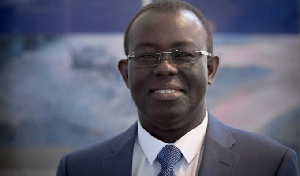President of the Chamber of Mines, Kwame Addo-Kufuor, is optimistic about the prospects of the country’s mining industry in 2017, as the new administration prioritizes the growth of private sector businesses.
“We are upbeat about the prospects of the mining industry in 2017, as are most connoisseurs. This optimism is somewhat anchored in the new administration’s policy to facilitate the development of a vibrant and competitive private sector as well as geopolitical and economic events.
The Chamber will strive to work closely with the relevant government functionaries to internalize the opportunities presented by the change in economic management policies.
I would therefore like to assure the government of our unalloyed cooperation and support to hasten the pace of our national development on the back of the minerals and mining industry,” Mr. Addo-Kufuor said at the 89th Annual General Meeting of the Ghana Chamber of Mines held in Accra.
“The potential for the mining industry in Ghana to support broad economic development is not lost on the Chamber of Mines. Besides the significant fiscal contributions of mining to the economy, the industry is keen to create, and grow a robust local supplier base,” he said.
Available data published by the Chamber reveals that the country’s gold output rose 46 percent in 2016 compared to the previous year, as new projects came on-stream and artisanal mining output expanded.
Total gold output stood at 4.13 million ounces, the highest level in nearly 40 years, up from 2.84 million ounces in 2015, the data showed.
“The steep upswing in the country’s main mineral export, gold from 2.8 million ounces in 2015 to 4.1 million ounces in 2016 was driven by fresh production from Asanko Gold Ghana Limited on the first Phase of its Obotan Mines and substantial increase in export through the Precious Minerals Marketing Company (PMMC),” the Chamber said in its 2016 annual report.
Besides Anglogold Ashanti’s Iduapriem and Newmont’s Ahafo growth in production. Output from artisanal miners rose nearly five-fold to 1.5 million ounces in 2016 from 267,662 in the previous year.
Total gold revenue rose 55 percent to US$5.15 Billion relative to the US$3.32 billion dollars recorded in 2015.
Manganese output also rose to 2 million tonnes last year from 1.2 million tonnes, while diamond production slipped to 143,005 carats from 185,376 carats in 2015.
Statistics from the country’s fiscal authority, Ghana Revenue Authority (GRA), shows that the mining and quarrying sector recaptured its position as the leading source of direct domestic revenue in 2016, after being displaced by the Financial and Insurance Sector in 2015.
Total fiscal receipts attributable to the mining and quarrying sector increased from GH?1.35 billion in 2015 to GH? 1.65 billion in 2016, representing a growth of 22 per cent.
This comprised payments of GH? 399.9 million, GH? 696.9 million, GH? 550.7 million and GH? 0.54 million in PAYE, Corporate Income Tax, Royalties and other taxes respectively.
Producing member companies of the Chamber returned US$ 2.30 billion out of realized mineral revenue of US$ 3.25 billion into the country, representing 70.9 per cent.
The producing mines spent US$ 1.01 billion on purchases of goods and services in-country, representing 31 per cent of realized mineral revenue. This amount exceeded the 2015 figure of US$865 million.
The consecutive increase in spending on local goods and services by the producing member companies mirrors the Chamber’s commitment to promoting local content in the mining industry.
In terms of job creation, total direct employment by the producing member companies stood at 11,628, representing a 16 per cent increase over the 2015 recorded figure of 9,939. Out of this, more than 98 per cent are Ghanaian nationals, further buttressing the commitment of member companies to make mining more relevant to our people.
Mr. John Peter Amewu, the Minister for Lands and Natural Resources, said transparency in the mining sector was critical to the positive image of the industry.
He said the perceived lack of transparency in the industry had been the underlying factor of acrimony between mining companies and their host communities as well as public suspicion that mining companies are exploiting the nation.
“Government therefore expects that as partners, we will be able to work together openly with mutual trust and devoid of any hidden tricks,” Mr Amewu said.
The Chamber’s Annual General Meeting came at the end of the Mining and Energy Forum and Exhibitions, which brought together members of the Chamber and other stakeholders to deliberate on the way forward for the mining industry.
High energy tariffs, unreliable power supply, high cost of fuel, high taxes, un-refunded Value Added Tax (VAT) payments and delays in granting permits were the major concerns of the mining industry.
Business News of Tuesday, 6 June 2017
Source: thebftonline.com













